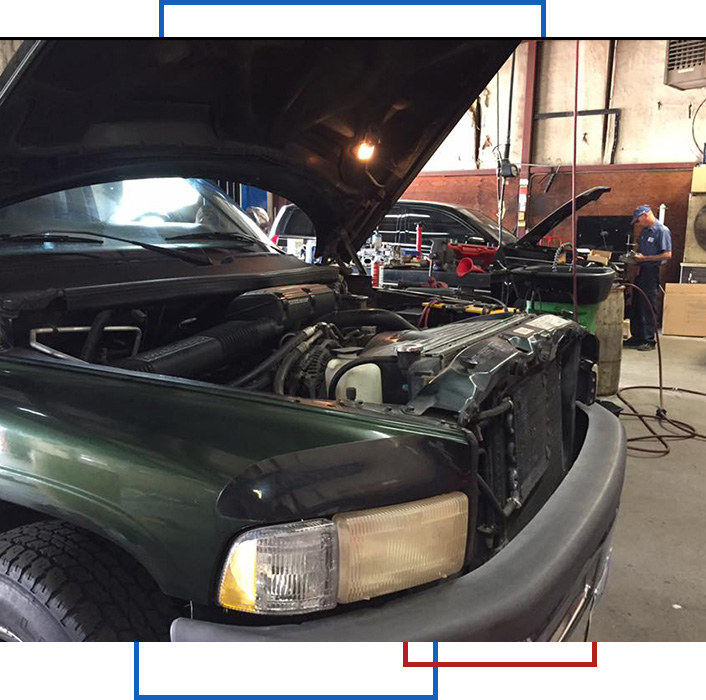Air Conditioning Service

The air conditioning unitIn Your Vehicle Operates Similarly to a Refrigerator
- The refrigerant carries heat. In modern cars, refrigerant is a substance called R-134a. Older cars’ refrigerant is called r-12 freon, which is more expensive and difficult to find than R-134a.
- The compressor circulates and compresses refrigerant within the vehicle’s cooling system.
- Your vehicle’s condenser changes the refrigerant from gas to liquid and expels heat from the car.
- The expansion valve (sometimes called the orifice tube) is a nozzle that simultaneously drops the pressure of the refrigerant liquid, meter its flow and atomize it.
- Your vehicle’s evaporator transfers heat to the refrigerant from the air blown across it, cooling your car.
- The receiver or dryer filters your vehicle’s refrigerant and oil, removing moisture and other contaminants from them.
When You Start Your Vehicle’s Air Conditioning System
The compressor works by putting the refrigerant under pressure, sending it to the condensing coils, which are generally in front of your vehicle’s radiator. The condenser expels hot air to outside the car, cooling the air within the vehicle. When this happens, the refrigerant is cooled, and it changes form a gas to a liquid, which then passes through the expansion valve and to the evaporator.
Once the evaporator receives the liquid-state refrigerant, it loses pressure and cools the remaining liquid. The vehicle’s blower moves air across the evaporator and into the vehicle’s interior. If you keep your air conditioning unit turned on, the refrigerant goes through this cycle continuously.
If any of these components is damaged, it can turn your cool car into a furnace during the summer months. Your vehicle’s air conditioning issue could be as simple as topping off refrigerant to replacing a valve. When your air conditioning unit is not working as it should, bring your vehicle to Guignard Automotive Services. One of our trained air conditioning specialists will inspect your car’s air conditioner, all lines, the evaporator and the compressor for leaks and wear.